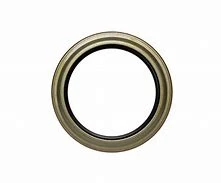Fixing Issues with Oil Drain Plug Repair Methods and Tips for Success
Oil Drain Plug Repair A Comprehensive Guide
The oil drain plug is a crucial component of any vehicle’s oil system. As the point through which the old oil is drained during an oil change, it must maintain a secure seal to prevent leaks. Over time, factors such as wear and tear, overtightening, or corrosion may necessitate an oil drain plug repair or replacement. In this article, we will explore the common issues associated with oil drain plugs and the steps to effectively repair or replace them.
Common Problems
1. Stripped Threads One of the most common issues is stripped threads on the oil drain plug. This can occur when the plug is overtightened, which compromises the integrity of the threads in both the plug and the oil pan. Stripped threads can lead to oil leaks, which can be detrimental to your vehicle's performance and could cause significant damage if left unaddressed.
2. Corrosion Over time, exposure to heat, oil, and moisture can cause the drain plug to corrode. This deterioration can lead to leaks and make it difficult to remove the plug during an oil change.
3. Cracking If made from plastic or certain alloys, the drain plug may become brittle and crack, especially in extreme weather conditions. A cracked plug can also lead to oil leakage and requires immediate attention.
Repairing a Stripped Oil Drain Plug
If the threads on your oil drain plug are stripped, there are a few options for repair
1. Thread Repair Kit A thread repair kit, such as a Helicoil or similar product, can effectively restore the threads. These kits typically include a coil that you insert into the damaged threads, providing a new surface for the drain plug to screw into.
oil drain plug repair

- Steps to Use a Thread Repair Kit - Drain the engine oil and remove the old drain plug. - Follow the instructions provided with the kit to drill out the damaged threads. - Insert the coil according to the kit instructions for a secure fit. - Reinstall the drain plug with a new washer to ensure a tight seal.
2. Oversized Drain Plug If the damage is beyond repair with a thread kit, consider using an oversized drain plug. This involves drilling out the hole and tapping it for a larger plug, which can be a straightforward solution if done carefully.
Replacement Options
If the drain plug is beyond repair due to severe corrosion or cracking, replacing it is the best option
1. Choosing the Right Drain Plug Ensure you select a replacement drain plug that matches the specifications of your vehicle. Consult the owner’s manual or check with a parts supplier to find the correct size and thread pitch.
2. Installation - Clean the area around the oil pan to remove any debris. - Install a new gasket or washer on the drain plug to ensure a tight seal. - Carefully thread the new plug into the oil pan, hand-tightening it first, and then tightening it with a wrench to the manufacturer’s torque specifications.
Conclusion
Maintaining a secure oil drain plug is essential for the health of your vehicle. Regularly checking for signs of wear, corrosion, or leaks can catch problems early and save you from more extensive repairs later. Whether you choose to repair the drain plug using a thread repair kit or replace it altogether, following the proper procedures will help keep your vehicle running smoothly. Always consult a professional if you are uncertain about any repair processes to ensure the longevity and reliability of your vehicle's engine.
-
Understanding the Front Main Engine Seal: Purpose, Maintenance, and Installation
News Jul.29,2025
-
Understanding O-Rings and Seal Rings: Types, Applications, and Custom Solutions
News Jul.29,2025
-
Understanding Crankshaft Oil Seals: Rear Seals, Pulley Seals, and Their Role in Engine Integrity
News Jul.29,2025
-
The Importance of Front and Rear Crankshaft Seals in Engine Performance and Oil Management
News Jul.29,2025
-
Crank Oil Seals: Functions, Types, and Cost Considerations in Engine Maintenance
News Jul.29,2025
-
A Comprehensive Guide to O-Rings and Seals: Types, Materials, and Global Applications
News Jul.29,2025
-
Mastering Diesel and Performance Engine Maintenance: A Guide to Critical Oil Gaskets
News Jul.28,2025
Products categories















